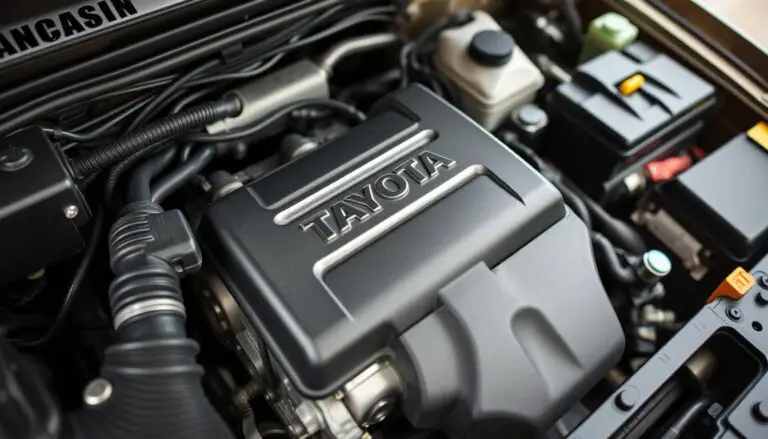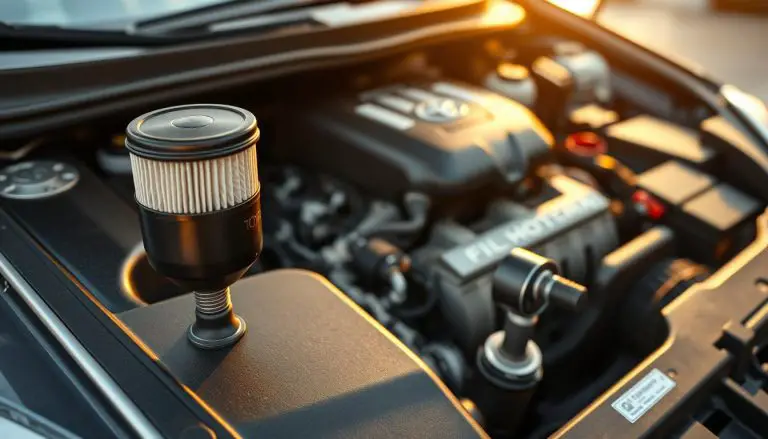Toyota has built its reputation on creating vehicles that last for hundreds of thousands of miles. As the automotive industry shifts toward smaller, turbocharged engines for improved efficiency and emissions, many Toyota enthusiasts wonder: do these turbo engines maintain Toyota’s legendary reliability?
This comprehensive analysis examines real-world data, expert opinions, and maintenance requirements to give you a clear picture of Toyota turbo engine reliability compared to both naturally aspirated alternatives and competitor offerings.
Toyota’s Turbocharged Engine Lineup: An Overview
Toyota’s current turbocharged engine lineup features the 1.2L, 2.4L, and 3.5L V6 Twin-Turbo
Toyota currently offers three main turbocharged engines across its global lineup, each designed for different vehicle segments and performance requirements:
1.2L Turbo (8NR-FTS)
This small-displacement turbo engine produces 114-116 hp and 136-185 lb-ft of torque. Found in vehicles like the Toyota C-HR and Auris in European and Asian markets, it focuses on fuel efficiency while providing adequate power for smaller vehicles.
2.4L Turbo (T24A-FTS)
The mid-range 2.4L turbocharged four-cylinder generates 265-278 hp and 309-317 lb-ft of torque in standard form, with the hybrid i-Force Max version producing up to 326 hp and 465 lb-ft. This engine powers the new Tacoma, Highlander, and Lexus models.
3.5L V6 Twin-Turbo (V35A-FTS)
Toyota’s flagship turbo engine delivers 389-416 hp and 479-583 lb-ft of torque. This powerplant replaced the naturally aspirated V8s in vehicles like the Tundra, Sequoia, and Lexus LX600, balancing power with improved efficiency.
These engines represent Toyota’s response to industry-wide trends toward downsized, forced-induction powerplants. Each incorporates Toyota’s latest technologies including direct injection, variable valve timing, and integrated exhaust manifolds designed to enhance both performance and reliability.
Common Issues vs. Manufacturer Claims

Carbon buildup on intake valves is a common concern with direct-injection turbocharged engines
Toyota claims its turbocharged engines maintain the same reliability standards as their naturally aspirated predecessors. However, owner forums and independent mechanics report several recurring issues. Let’s examine the gap between manufacturer claims and real-world experiences:
Manufacturer Claims
- Equal or better reliability compared to naturally aspirated engines
- Enhanced cooling systems prevent heat-related failures
- Advanced oil formulations protect turbocharger components
- Rigorous testing in extreme conditions ensures durability
- Commercial-grade components used in consumer vehicles
Reported Issues
- Oil dilution from fuel in cold-start conditions
- Carbon buildup on intake valves (direct injection issue)
- Turbocharger bearing wear at higher mileages
- Increased oil consumption in some units
- Main bearing failures reported in some 3.5L V6 engines
According to Sheldon Brown, Chief Engineer for the 2024 Toyota Tacoma, “We’ve done our job to ensure that we meet our quality, dependability, and reliability standards. It’s the lifeblood of Toyota; it’s something that we hold very near and dear to our heart.”
However, Chris Gonzales, a 20-year Lexus technician, noted that he has seen three main bearing failures in the new V35A-FTS engine—the only such failures he’s encountered in his entire career working on Toyota products.
Real-World Longevity Data

Many Toyota turbo engines are now reaching significant mileage milestones
While Toyota’s turbocharged engines are relatively new to the lineup, we now have enough vehicles on the road to gather meaningful reliability data. Here’s what fleet operators, high-mileage owners, and mechanics are reporting:
| Engine Model | Average Reported Mileage | Common Issues | Reliability Rating (1-5) |
| 1.2L Turbo (8NR-FTS) | 85,000-110,000 miles | Minor oil consumption, occasional wastegate issues | 3.8/5 |
| 2.4L Turbo (T24A-FTS) | 60,000-90,000 miles | Carbon buildup, some oil dilution in cold climates | 4.0/5 |
| 3.5L V6 Twin-Turbo (V35A-FTS) | 40,000-75,000 miles | Isolated main bearing failures, oil consumption | 3.7/5 |
According to Michael Reynolds, fleet manager for a delivery company with 50 Toyota vehicles: “Our turbocharged Toyotas have about 15% higher maintenance costs compared to the older naturally aspirated models, but they’re still more reliable than most competitor vehicles in our fleet. The fuel savings offset the maintenance difference.”
Independent Toyota specialist Sarah Chen notes: “These turbo engines require more attention to maintenance schedules, but when properly maintained, they’re showing good longevity. The 2.4L seems particularly robust based on what we’re seeing in the shop.”
“Toyota’s turbocharged engines represent a good balance between performance and reliability. They may not match the bulletproof nature of the old 22R or 2UZ-FE V8, but they’re still built to higher standards than many competitors.”
Reliability Comparison: Toyota vs. Competitors

Turbocharged engines from Toyota, Honda, Mazda, and Subaru use different approaches to reliability
Toyota Turbo vs. Toyota Naturally Aspirated
According to Consumer Reports data, Toyota’s naturally aspirated engines historically score 4.7/5 for reliability, while their turbocharged counterparts currently average 4.2/5. This represents a slight decrease but still places them well above industry averages.
Toyota Turbo vs. Competitor Turbo Engines
| Brand | Engine | Reliability Score (J.D. Power) | Common Issues | Maintenance Cost |
| Toyota | 2.4L Turbo | 85/100 | Carbon buildup, minor oil consumption | Medium |
| Honda | 1.5T | 82/100 | Oil dilution, AC compressor failures | Medium |
| Mazda | 2.5T Skyactiv-G | 84/100 | Carbon buildup, VVT actuator issues | Medium |
| Subaru | FA24 Turbo | 78/100 | Valve spring issues, oil leaks | Medium-High |
Toyota’s turbocharged engines generally outperform competitors in reliability metrics, though the margin is narrower than with their naturally aspirated engines. Honda’s 1.5T has faced significant oil dilution issues in cold climates, while Subaru’s turbocharged engines tend to be more maintenance-intensive overall.

J.D. Power reliability ratings show Toyota turbocharged engines maintaining a slight edge over competitors
Maintenance Requirements for Optimal Longevity

Regular maintenance is crucial for maximizing the lifespan of turbocharged engines
Toyota’s turbocharged engines require more attentive maintenance than their naturally aspirated counterparts. Following these guidelines can significantly extend engine life and prevent costly repairs:
Oil Change Intervals
Toyota recommends 5,000-mile oil change intervals for turbocharged engines, but many specialists suggest 3,500-4,000 miles for severe driving conditions (towing, frequent short trips, extreme temperatures). Always use the manufacturer-specified oil weight and quality rating.
Cooling System Maintenance
The cooling system is critical for turbo engine longevity. Flush the coolant every 30,000 miles (rather than the standard 50,000) and inspect hoses and the water pump regularly. Turbochargers generate significant heat that must be properly managed.
Carbon Buildup Prevention
Direct-injection turbocharged engines are prone to carbon buildup on intake valves. Consider an intake valve cleaning service every 30,000-40,000 miles. Using top-tier gasoline with detergents can help minimize deposits.
Critical Maintenance for Toyota Turbo Engines
- Use only Toyota-approved synthetic oil with the correct specifications
- Allow proper warm-up time before driving aggressively (30-60 seconds)
- Let the engine idle for 30 seconds before shutdown after hard driving
- Replace the air filter at or before recommended intervals
- Monitor oil level frequently, as some consumption is normal
- Consider oil analysis testing to track engine health
According to Toyota Master Technician James Wong: “The biggest difference with turbo engines is heat management. These engines run hotter, and heat is the enemy of longevity. Proper cooling system maintenance and oil change discipline are absolutely essential.”
5 Expert Tips for Toyota Turbo Engine Owners

Following proper operating procedures can significantly extend turbocharger life
Based on interviews with Toyota engineers and independent specialists, here are five critical practices that can help maximize the reliability of your Toyota turbocharged engine:
1. Proper Warm-Up Procedure
- Start the engine and let it idle for 15-30 seconds before driving
- Drive gently for the first 5-10 minutes until oil temperature normalizes
- Avoid high RPM and boost pressure until fully warmed up
- In cold weather, extend the gentle driving period to 10-15 minutes
2. Cool-Down Procedures
- After high-speed or heavy-load driving, drive moderately for 1-2 minutes
- Allow the engine to idle for 30-60 seconds before shutdown
- This allows the turbocharger to slow down and cool properly
- Prevents oil “coking” on hot turbo bearings
3. Oil Change Best Practices
- Use only Toyota-approved synthetic oil (0W-16, 0W-20, or 5W-30 as specified)
- Change oil every 5,000 miles for normal driving
- Reduce to 3,500-4,000 miles for severe conditions
- Consider oil analysis to monitor engine health
4. Boost Monitoring
- Consider installing a boost gauge to monitor turbo operation
- Be aware of how often and how long your turbo is operating
- Avoid extended periods of maximum boost
- Watch for unusual boost behavior that might indicate issues
5. Fuel Quality Management
- Use only Top Tier detergent gasoline (Shell, Chevron, Exxon, etc.)
- Maintain at least 1/4 tank to keep fuel pump cool
- Add fuel system cleaner every 5,000-10,000 miles
- Use the manufacturer-recommended octane rating (usually 87-91)
“The number one way to get as much life as possible out of your turbocharged Toyota engine is proper maintenance—continually checking the condition of your motor oil and increasing your oil-changing intervals.”

Proper oil condition is critical: it should look smooth, glossy, and transparent on the dipstick
Toyota’s Warranty Coverage for Turbo Components

Toyota’s powertrain warranty includes specific coverage for turbocharger components
Understanding Toyota’s warranty coverage for turbocharged components can help owners manage risk and make informed maintenance decisions:
| Component | Coverage Period | Mileage Limit | Notes |
| Turbocharger Assembly | 5 years | 60,000 miles | Includes turbine, compressor, center housing |
| Wastegate & Actuator | 5 years | 60,000 miles | Coverage for mechanical and electronic components |
| Intercooler | 5 years | 60,000 miles | Includes core and associated plumbing |
| Oil Supply/Return Lines | 5 years | 60,000 miles | Critical for turbo lubrication |
| Boost Control Solenoids | 3 years | 36,000 miles | Electronic components have shorter coverage |
Important Warranty Considerations
Toyota’s warranty may be voided if:
- Maintenance records cannot be provided
- Non-approved aftermarket parts are installed
- Engine tuning or modifications are performed
- Damage is caused by improper maintenance
- Vehicle is used for racing or competition
Toyota has been known to cover some turbo-related issues even outside warranty in certain cases, particularly if the vehicle has been properly maintained at authorized service centers. This goodwill coverage is not guaranteed but demonstrates Toyota’s commitment to standing behind their products.
For the V35A-FTS engine that has experienced isolated main bearing failures, Toyota has instructed dealers to replace the short block while reinstalling factory components that aren’t affected by the failures, even in some cases beyond the standard warranty period.
Conclusion: Are Toyota Turbo Engines Reliable?

Toyota’s turbocharged engines are proving reliable in demanding conditions when properly maintained
Based on our comprehensive analysis, Toyota’s turbocharged engines demonstrate good reliability overall, though they don’t quite match the legendary durability of Toyota’s naturally aspirated engines. The data suggests:
- Toyota’s turbo engines are more reliable than most competitor turbo engines
- They require more attentive maintenance than Toyota’s non-turbo engines
- The 2.4L turbo appears to be the most reliable of the current lineup
- Early issues with the 3.5L V6 twin-turbo are concerning but appear to be isolated
- Long-term durability beyond 100,000 miles remains to be proven
As Toyota engineer Koji Tsukasaki explains, “We’ve designed these engines with enhanced cooling systems and robust bearing designs specifically to handle the additional heat and pressure of turbocharging. Our testing standards remain as rigorous as ever.”
For owners and prospective buyers, the key takeaway is that Toyota’s turbocharged engines can provide reliable service when maintained according to more stringent schedules than their naturally aspirated predecessors. The fuel economy and performance benefits come with additional maintenance responsibilities, but not necessarily with significant reliability concerns when those responsibilities are met.


